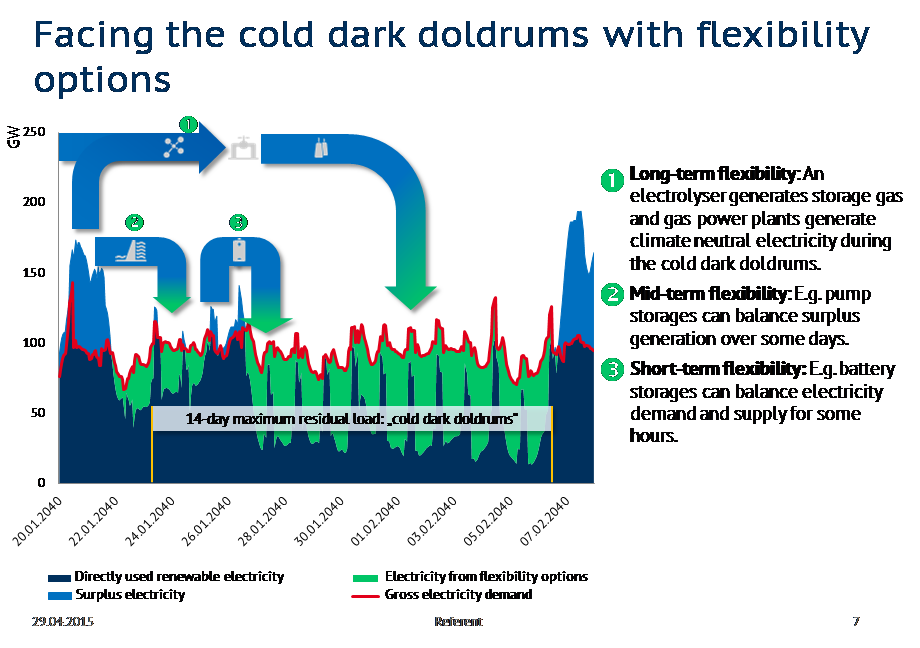Energy Brainpool has examined the issue of a long-lasting cold dark doldrums by comparing different modelled weather years in a new study. For this purpose, the study looks at the influence of the weather of 2006 to 2016 on the current electricity system.
On behalf of Greenpeace Energy eG, Energy Brainpool also develops a system including a high share of fluctuating renewable energies, which comes through a cold dark doldrums along with high residual load. The system is economically evaluated as well.
Due to low wind/doldrums, the weather or seasonal darkness, the electricity generation from wind and solar can be low over a long period of time. If this condition lasts for some days, an electricity system with a high share of fluctuating renewable energies can be challenged, as short- and mid-term flexibility options (e.g. storages or load management) reach their capacity limits. If this condition appears during winter, long-term low generation from wind and solar can meet high electricity demand due to the cold and dark weather. This situation is called cold dark doldrums and describes the stress tests for the energy system for the future.
The study covered the decade between 2006 and 2016. In the weather year 2006, especially two weeks from the end of January to beginning of February, turned out to be the extreme case of a cold dark doldrums. However, the analysis indicates similar two-week phases approximately every two years.
Besides the temporal aspect, the spatial dimensions play an important role as well. An analysis of the period of the cold dark doldrums shows that in 2006 the extreme weather case extended across whole continental Europe. Consequently, even highly extended cross-border capacities cannot meet the requirements for a European balancing effect. This shows an exemplary comparison of average wind speeds in Europe in two multi-day periods. The first figure shows a typical weather situation, while the second shows a few days of the cold dark doldrums. While in the first illustration a European balancing is possible, there are only a few possible cases on several successive days in the second figure.

Figure 1: Hourly wind speed in Europe from 17th to 24th February 2006 (typical case). Green areas indicate wind speed near 0 m/s, red areas indicate wind speed of 10 m/s at least, source: Energy Brainpool

Figure 2: Hourly wind speed in Europe from 1st to 7th February 2006 (cold dark doldrums). Green areas indicate wind speed near 0 m/s, red areas indicate wind speed of 10 m/s at least, source: Energy Brainpool
In the case of an additional lignite phase-out, the included additions of cross-border capacities are not sufficient to ensure the security of supply during a cold dark doldrums.
In order to reach security of supply as well as decarbonisation of the electricity sector, the study develops a resilient and sustainable electricity system. The model assumes that gas storages are filled with gas from electrolysers fed by renewable energies and biogas. Moreover, the system requires mid-term flexibility options (pump storages) as well as short-term electricity options (battery storages). It also necessitates a controllable demand in order to ensure a sufficient balance of electricity offer and demand. This relation is pictured in the following figure:

Figure 3: Schematic illustration if flexibility options, which ensure security of supply in the developed electricity system during a cold dark doldrums, source: Energy Brainpool
Thereby, the supply can be secured with climate neutral gas power plants in times of a cold dark doldrums. The described system’s average cost of electricity will be 5.7 ct/kWh (excl. transport/distribution), if the costs decrease continues that as sharply as today, or 9.5 ct/kWh, if the decrease continues slowly.



